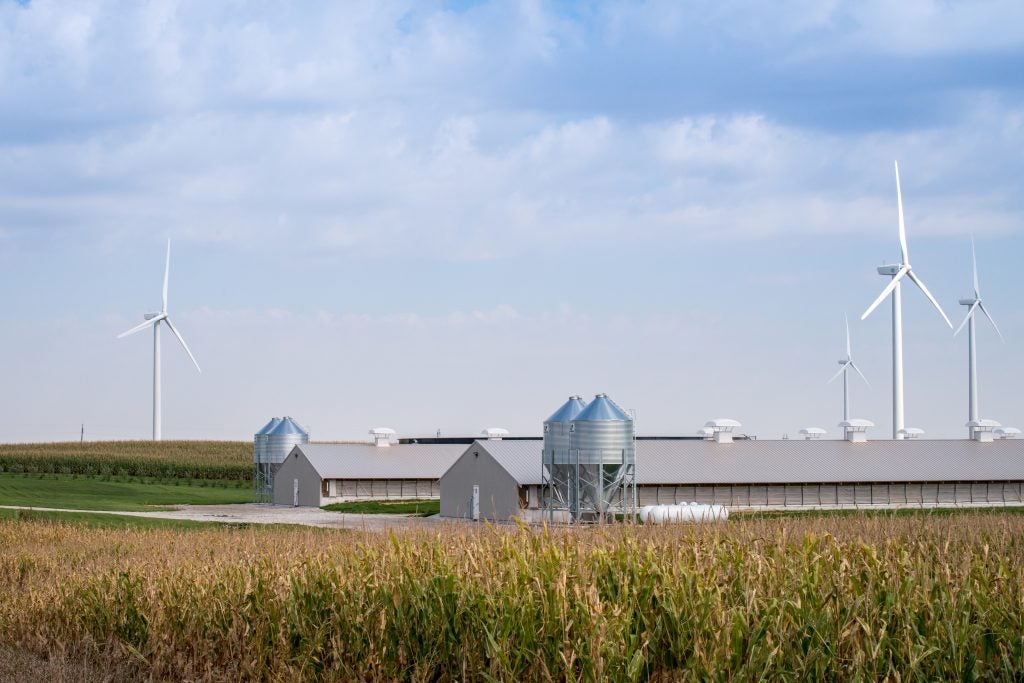“Can you help us achieve this?”
That was the question that Smithfield Foods’ chief sustainability officer asked Environmental Defense Fund more than five years ago, after Walmart challenged the world’s largest hog producer and pork processor to improve sustainability in its feed grain supply.
At the time, very few food companies considered grain sustainability to be their responsibility, and even fewer were taking steps to improve that segment of their supply chain. But Smithfield responded to Walmart’s challenge.
In 2013, the company committed to work with grain farmers in its supply chain to adopt farming practices that would optimize fertilizer and build soil health on 75 percent of the area from which Smithfield directly sources grain — about 450,000 acres. EDF partnered with Smithfield to figure out how to reach this goal.
Smithfield announced today that it exceeded that goal, improving practices on 560,000 acres in 2018.
A new case study, published in conjunction with this announcement, explains how Smithfield exceeded its goal and generated value by doing so. Authored by Datu Research with contributions from EDF and Smithfield, the case study examines the different grain sustainability interventions tried by Smithfield — both those that worked, and those that didn’t — as well as the manure-to-energy projects Smithfield is implementing to reduce greenhouse gas emissions 25 percent by 2025, a first-of-its-kind commitment from a major protein company.
Here are three key takeaways from the report.
1. Food companies can improve sustainability in commodity grain supply chains.
The case study details nine different initiatives that Smithfield implemented to improve sustainability in its supply chain. Examples include agronomists who work directly with grain farmers, purchasing seed and technology and providing it at a lower cost to participating farmers, and developing new business partnerships to extract additional value from manure.How successful grain sustainability initiatives can deliver shared value to the environment, farmers and corporations Share on X
2. The most successful initiatives focused on shared value to the environment, farmers and Smithfield.
Smithfield wanted to purchase more winter wheat for its hog feed, which would also keep soils covered throughout the winter months. The company developed a program that offered low-cost seed and agronomic assistance to grain farmers who planted winter wheat.
As a result, Smithfield was able to increase winter wheat planting on 30,000 additional acres and increase its wheat purchases by 2 million bushels in just two years.
3. The next evolution of grain sustainability will be collecting data that shows environmental impact.
To assess progress, Smithfield utilized the Walmart reporting framework, which tracks the number of acres on which improved practices have been adopted. However, Smithfield did not track fertilizer application amount or crop yield, which would allow for accurate calculation of environmental impacts such as GHG emissions reductions through metrics such as nitrogen balance.
Future efforts by Smithfield and other companies must seek to improve data reporting methods in order to accurately assess the environmental impacts of their efforts.
Making sustainability the norm
Why would Smithfield share the secrets of its success and lessons learned with other food companies, including its competitors?
One reason is that while EDF does not accept financial contributions from the companies we work with, we do insist on collaborating with companies that can drive change throughout an entire industry. As the largest hog producer and pork processor in the world, Smithfield’s leadership in addressing grain sustainability is welcome — particularly because animal agriculture consumes nearly 40 percent of U.S. corn production.

Grain production for hog feed makes up approximately 15-20 percent of Smithfield’s life cycle GHG emissions. (Photo courtesy of Smithfield Foods, Inc.)
The second reason is that truly ambitious supply chain sustainability goals can only be achieved through collaboration. Complex food supply chains include many different companies and farmers, and no single company can control everything occurring in that chain. Rather, companies must work with others in the chain to identify opportunities that benefit all parties and produce environmental benefits.
It is our hope that sharing Smithfield’s grain sustainability achievement can motivate and assist other food companies to do the same, until practices that reduce fertilizer loss and build soil health become the norm in agriculture.









